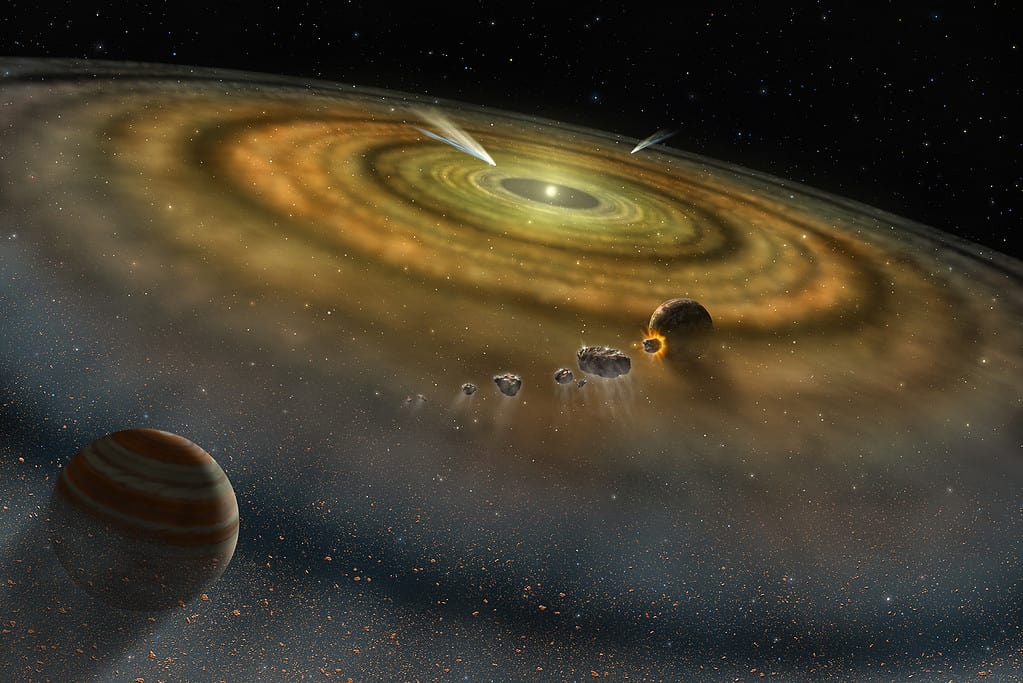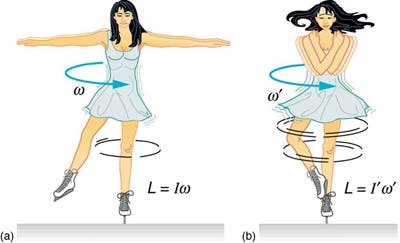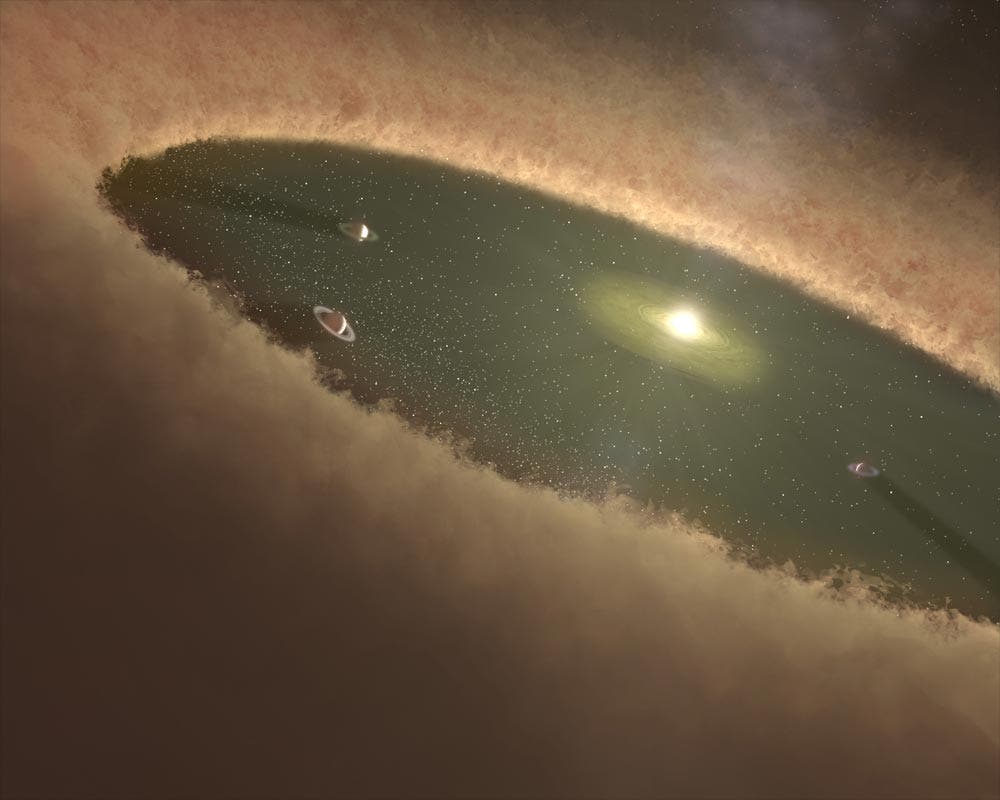The solar system we live in is remarkably flat. Not all solar systems in the galaxy are flat, but a good number of them are — and this has to do with how solar systems typically form.
When most solar systems form, they start out as a cloud of gas and dust, swirling lazily around in space. But when a star starts to form at its center and gravity starts to pull on the cloud, the cloud begins to twirl and whirl around it. This swirling motion flattens the cloud, transforming it into a disk. But that’s just the short story — the physics behind it gets much more interesting.
A 2D solar system in a 3D universe
Space is tridimensional, but isn’t it odd that many cosmic objects arrange themselves in the same plane? If you look at our solar system for instance, the planets orbit the sun in the same plane. The sun and the planets are not distributed in a spherical configuration. In fact, most of the planets in our solar have an elliptical orbit. This orbit strays less than 3 degrees from a 2D plane. This holds true for the asteroid belt and beyond, although once you get to Neptune and the outer edges of the solar system, it becomes less flat.
This flatness pops up on both small and astronomical scales. Saturn’s rings are arranged in a disc shape in the same plane as the planet’s center of mass. Asteroid belts are also flat and so are most galaxies. These things don’t form exactly the same way so what gives?
This physical property can be explained by a fundamental law of physics: the conservation of angular momentum.
Angular momentum describes how much something is rotating, or spinning around a certain point or axis, and how difficult it would be to stop that rotation.
The law of conservation of angular momentum states that when no external torque acts on an object, no change in angular momentum will occur. If the net torque is zero, then angular momentum is constant or conserved. In other words, the total amount of spinning that an object has will not change unless something from the outside intervenes to speed it up or slow it down.
The classic example of this is an ice skater performing a spin. The conservation of angular momentum that can explain why an ice skater can increase angular acceleration by bringing their arms and legs close to the vertical axis of rotation. Because the momentum is conserved, when the skater decreases the rotational inertia, the rotation rate must increase.
Now, let’s move on to solar systems.
Why the solar system is (almost) flat
This all relates to the flatness of the solar system, but let’s rewind a bit Some 4.6 billion years ago, Earth and the Sun had yet to form. Instead, a huge blob of gas and dust floated about for millions of square miles.
Attracted by gravity, particles of matter gradually moved closer eventually resulting in collisions. Whenever some particles collide, their new trajectories are random. The new direction is impossible to predict but the angular momentum must remain constant. Herein lies the key of why the solar system is flat
As gravity started to compact the proto solar system, the cloud got smaller and smaller. Remember how ice skaters spin faster when they bring their hands closer to their body? The same thing happened to the solar system. It started spinning faster and faster, resulting in a disk-like cloud with a bulge at its center. This bulge coalesced into the Sun.
The rest of the disk, still spinning, had many smaller bits of matter that started to clump together due to gravity. These bits of primordial gas and dust and rocks were colliding on and on, but because of the spinning and gravitational pull, they slowly lost their freedom to move outside of the flat plane.
These clumps eventually formed the planets, asteroids, and other bodies in the solar system. The planets continued to conserve their angular momentum as they formed, which is why they all rotate on their axes (like the Earth’s day-night cycle) and revolve around the Sun in the plane of the original disk (the plane of the solar system).
Because all that matter formed a disk in the same plane, all of the planets formed in the same plane as well. Were it not for the law of conservation of angular momentum, it would have been impossible for stars and planets to form. We owe our very existence to this fundamental law of physics.

Our solar system isn’t the flattest and it’s pretty curious
As a caveat, we must note that the solar system isn’t perfectly flat. Pluto, the dwarf planet and still-planet-in-our-hearts, has an orbital inclination of about 17 degrees relative to the plane of the solar system. The Kuiper belt, a collection of icy bits that lies beyond Neptune and Pluto, is even more extreme, with inclinations of up to 30 degrees.
Flat galaxies also have a bulge at their center, so they’re not perfectly flat. Nevertheless, 98% of the stars in a galaxy orbit inside spiral arm filaments around the center of the galaxy.
But all things considered, the solar system is pretty tidily arranged in the same plane. Still, other solar systems can be even flatter.
In a study published The Monthly Notices of the Royal Astronomical Society, scientists modeled the solar systems detected by the Kepler Space Telescope. They found most of these are flat like our solar system. Even the now-famous TRAPPIST-1 planetary system, which has 7-Earth-like planets only 39 light-years away, is almost perfectly flat.
“The wealth of the Kepler planet data allows for the first time detailed studies of planet systems outside the solar system. We are now able to ask and answer questions like, how common are planet systems like our own?” Tim Bovaird, a researcher at ANU the lead author of the new study, said in a press release.
But with more and more telescopes and more and more data, astronomers are finding many intriguing solar systems. There’s a lot of variety among these solar systems and not all look like our own. Accounting for the geometry of these solar systems will force us to understand what are some other ways through which solar systems can emerge.
“It’s an exciting time, because so many planets have been discovered in other solar systems, for example by NASA’s Kepler space telescope and Transiting Exoplanet Survey Satellite (TESS), and a lot of them look very different from the planets in our solar system,” said Rebekah Dawson, Shaffer Career Development Professor in Science and assistant professor of astronomy and astrophysics. “So, we have to come up with new ways of thinking about planet formation that can account for the diversity of planets we now know about.”








